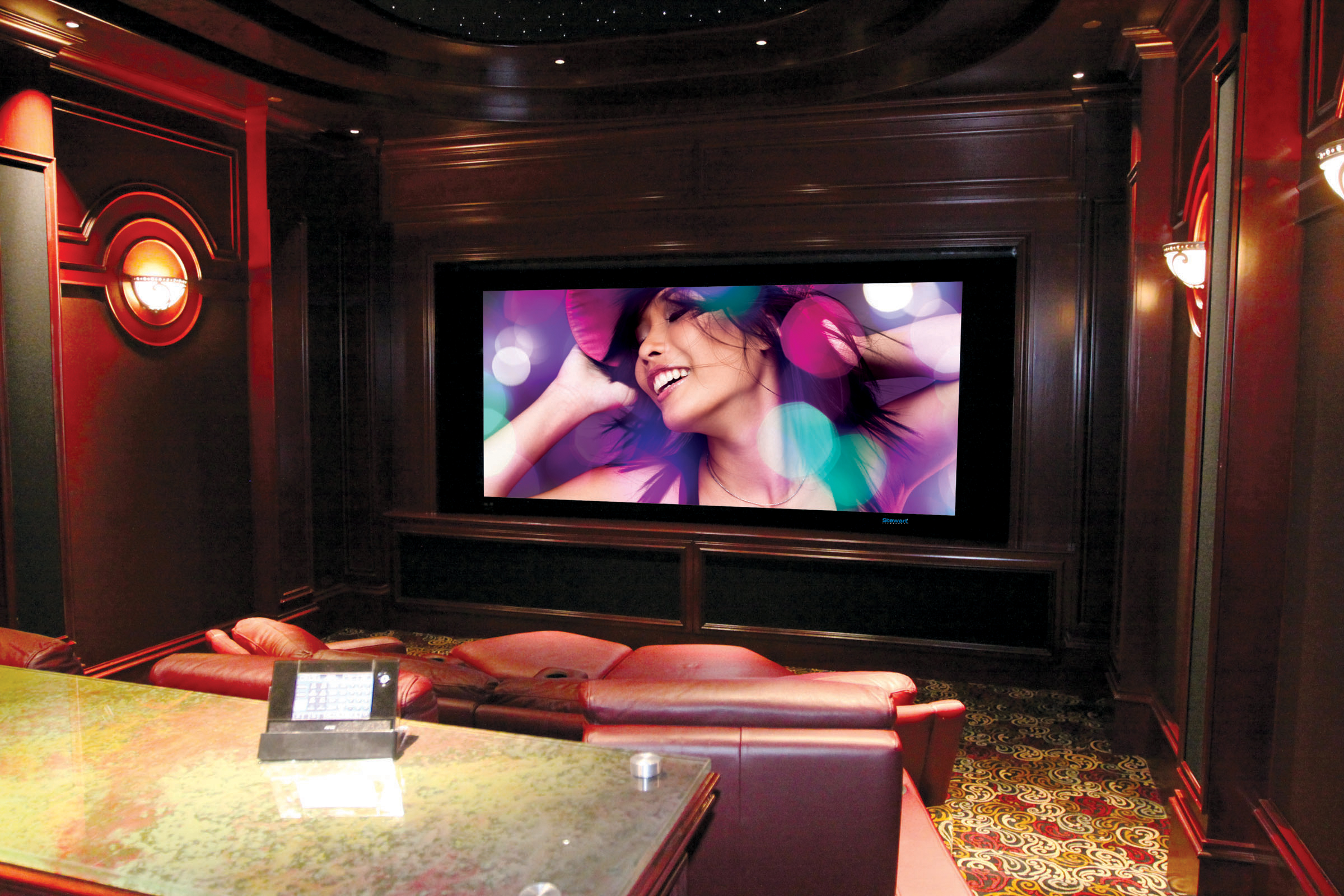Stewart Acoustimask masking system

Stewart Filmscreen offers a variety of masking systems designed to define a specific image ratio (4:3, 16:9, 2.35:1, etc.) by covering all areas outside this image with a very dark material that negates any unwanted light spill and creates a sharply contrasted edge. The masking system itself has a significant effect on the overall acoustical transparency of the screen and the audio quality of the entire system. Many home-owners opt to have screens that are nearly as wide as their theatre – thus, along with the centre channel speaker that is commonly placed behind the screen, it results in the need to also place the left and right speakers behind it as well.
“Stewart Filmscreen has been committed to providing the best AV experience for over 60 years. Our perforated screen materials are THX certified and with our extensive range of masking products viewers have the ultimate flexibility in the video formats. By refining our masking systems with the new AcoustiMask products, installers can now place the centre, right and left speakers behind the screen without fear of acoustical disturbance,” says Stewart Filmscreen director of sales North America Joaquin Rivera.
In consulting with Steve Haas, world-renowned acoustician, it was learned that not only is the acoustical transparency of the masking material just as important as that of the screen itself, but the combination of the two materials with the typical separation distance must also be considered. If not, then the quality of sound will change dramatically depending on what image format your movie or TV program is played back in.
ADVERTISEMENT
Certain masking formats will result in the leading edge frame of the masking system covering a critical part of the loudspeakers. Therefore, the challenge is to design a leading edge frame that is stiff enough to support the masking system and maintain a sharp edge, yet shaped and configured to have as little acoustic effect on the sound – even if situated very close to the smallest drivers of the left and right loudspeakers.
Stewart Filmscreen commissioned Mr. Haas to help refine their existing motorised masking systems. Testing was conducted for months to both optimise the frame/batten configuration, masking fabric selection and manufacturing itself until the AcoustiMask was perfected.
“The AcoustiMask utilises new round profile leading edges on masking panels to reduce parallel sonic reflections and achieve optimal separation of screen material to masking system. When combined with a Stewart-designed masking fabric that transmits more sound yet blocks more light, the AcoustiMask now brings the next reference level to electronic masking systems,”says SH Acoustics president Steve Haas.
-
ADVERTISEMENT
-
ADVERTISEMENT
-
ADVERTISEMENT
-
ADVERTISEMENT
